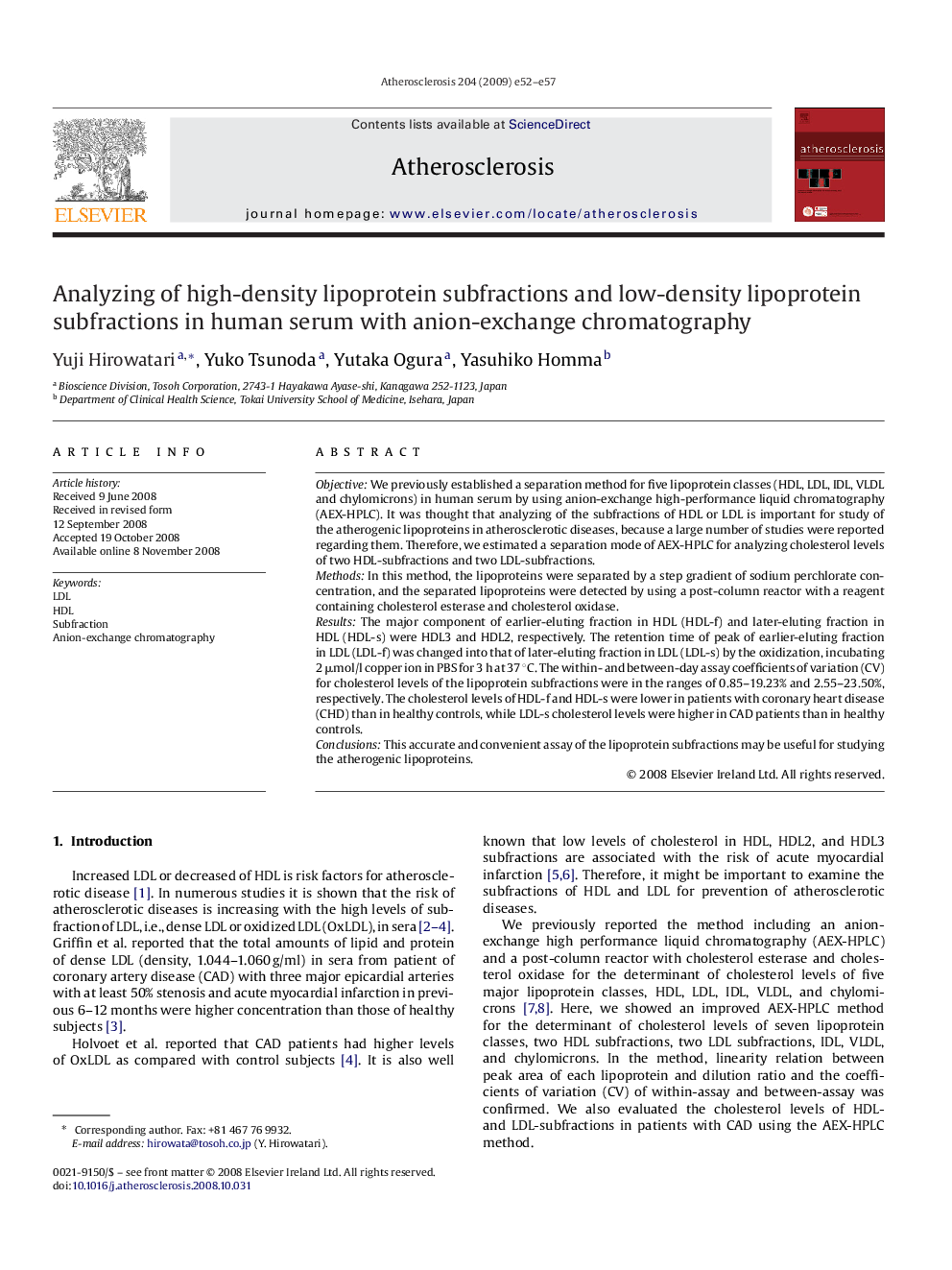| Article ID | Journal | Published Year | Pages | File Type |
|---|---|---|---|---|
| 2893522 | Atherosclerosis | 2009 | 6 Pages |
ObjectiveWe previously established a separation method for five lipoprotein classes (HDL, LDL, IDL, VLDL and chylomicrons) in human serum by using anion-exchange high-performance liquid chromatography (AEX-HPLC). It was thought that analyzing of the subfractions of HDL or LDL is important for study of the atherogenic lipoproteins in atherosclerotic diseases, because a large number of studies were reported regarding them. Therefore, we estimated a separation mode of AEX-HPLC for analyzing cholesterol levels of two HDL-subfractions and two LDL-subfractions.MethodsIn this method, the lipoproteins were separated by a step gradient of sodium perchlorate concentration, and the separated lipoproteins were detected by using a post-column reactor with a reagent containing cholesterol esterase and cholesterol oxidase.ResultsThe major component of earlier-eluting fraction in HDL (HDL-f) and later-eluting fraction in HDL (HDL-s) were HDL3 and HDL2, respectively. The retention time of peak of earlier-eluting fraction in LDL (LDL-f) was changed into that of later-eluting fraction in LDL (LDL-s) by the oxidization, incubating 2 μmol/l copper ion in PBS for 3 h at 37 °C. The within- and between-day assay coefficients of variation (CV) for cholesterol levels of the lipoprotein subfractions were in the ranges of 0.85–19.23% and 2.55–23.50%, respectively. The cholesterol levels of HDL-f and HDL-s were lower in patients with coronary heart disease (CHD) than in healthy controls, while LDL-s cholesterol levels were higher in CAD patients than in healthy controls.ConclusionsThis accurate and convenient assay of the lipoprotein subfractions may be useful for studying the atherogenic lipoproteins.
